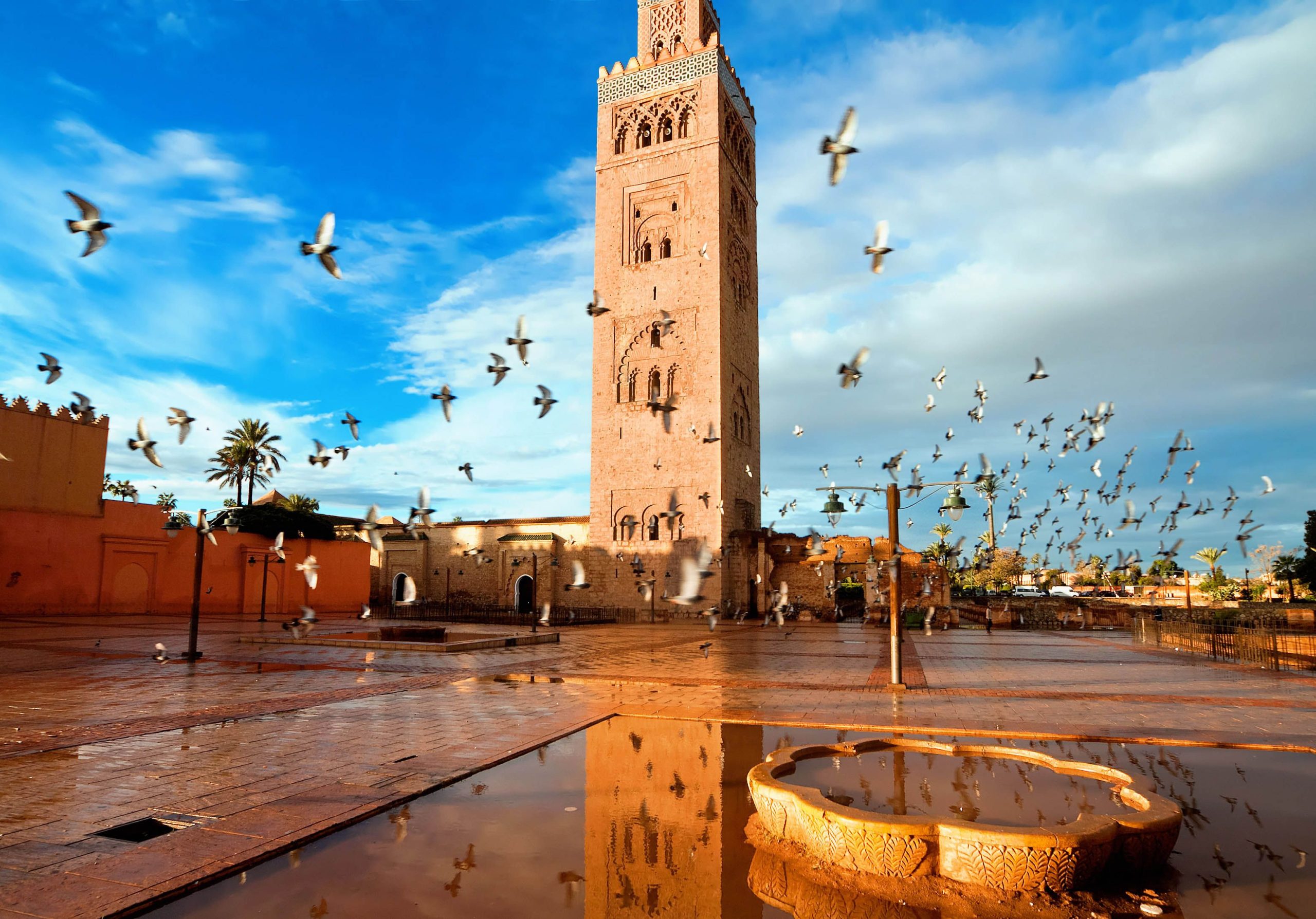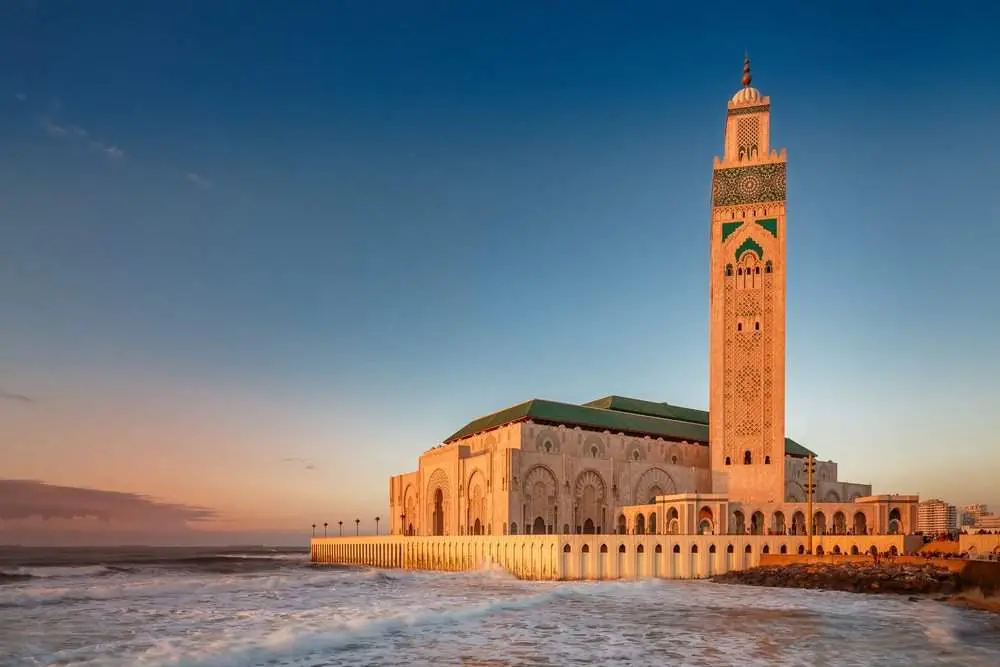
Morocco, a land where the Sahara Desert meets the Atlantic Ocean, is a sensory feast that captivates travelers with its vibrant culture, stunning landscapes, and rich history. From the bustling souks of Marrakech to the serene blue-washed alleys of Chefchaouen, Morocco offers an unforgettable journey through ancient traditions and modern allure. Whether you’re a history buff, an adventure seeker, or a foodie, this North African gem has something to offer everyone.
Top Attractions: A Journey Through Diverse Landscapes and Cultures
Morocco’s diverse landscape is reflected in its incredible array of attractions:

Related Articles about Morocco: A Kaleidoscope of Culture, Color, and Adventure:
- Kuala Lumpur: A Tapestry of Tradition and Tomorrow
- Norway: A Symphony of Fjords, Northern Lights, and Viking Lore
- Yogyakarta: A Comprehensive Guide to the Soul of Java
- India: A Traveler’s Guide to a Land of Infinite Wonders
- Cusco: Gateway to the Sacred Valley and the Lost City of the Incas
-
Marrakech: The Red City: A sensory explosion, Marrakech is the gateway to Morocco for many. Djemaa el-Fna, the main square, transforms into a vibrant spectacle at night with storytellers, snake charmers, food vendors, and musicians. Explore the intricate Bahia Palace, a masterpiece of Moroccan architecture, and wander through the tranquil Jardin Majorelle, a botanical oasis of vibrant blue and exotic plants created by Yves Saint Laurent. Don’t miss the Saadian Tombs, hidden for centuries, showcasing exquisite tilework and intricate carvings. Shopping in the souks is an experience in itself, where you can haggle for spices, leather goods, carpets, and handcrafted treasures.
-
Fez: The Cultural Heart: Immerse yourself in the medieval atmosphere of Fez el Bali, the oldest and largest car-free urban area in the world. The Chouara Tannery is a pungent but fascinating sight, witnessing the traditional leather-making process. Explore the Al-Attarine Madrasa, a stunning theological college showcasing intricate Islamic art. Get lost in the labyrinthine alleys of the medina, a UNESCO World Heritage site, and discover hidden mosques, workshops, and traditional riads.
-
Chefchaouen: The Blue Pearl: Nestled in the Rif Mountains, Chefchaouen is a picturesque town painted in shades of blue. The exact origins of the blue hue are debated, but it’s believed to have been introduced by Jewish refugees in the 15th century. Stroll through the charming streets, admire the blue-washed buildings, hike to the Spanish Mosque for panoramic views, and enjoy the relaxed atmosphere of this unique town.

-
The Sahara Desert: No trip to Morocco is complete without venturing into the Sahara. Merzouga is a popular gateway, offering camel treks, 4×4 adventures, and overnight stays in Berber camps. Witness breathtaking sunsets and sunrises over the endless sand dunes, experience the silence of the desert, and marvel at the starry night sky. Consider visiting Erg Chigaga for a more remote and authentic desert experience.
-
Essaouira: The Windy City: A charming coastal town with a relaxed atmosphere, Essaouira is known for its strong winds, making it a popular destination for windsurfing and kitesurfing. Explore the historic medina, a UNESCO World Heritage site, with its Portuguese ramparts, bustling port, and artisan workshops. Enjoy fresh seafood at the local restaurants, relax on the beach, and watch the sunset over the Atlantic Ocean.
-
Ait Benhaddou: A Cinematic Kasbah: This fortified village, a UNESCO World Heritage site, is a stunning example of traditional Moroccan architecture. Its earthen buildings and towering kasbahs have served as a backdrop for numerous films, including "Gladiator" and "Game of Thrones." Explore the intricate network of alleyways and climb to the top of the kasbah for panoramic views of the surrounding landscape.
-
The High Atlas Mountains: Offering breathtaking scenery and opportunities for hiking and trekking, the High Atlas Mountains are a haven for outdoor enthusiasts. Toubkal National Park is home to Jebel Toubkal, the highest peak in North Africa. Explore Berber villages, discover hidden waterfalls, and experience the rugged beauty of the mountains.
A Glimpse into History: From Berber Kingdoms to Modern Morocco
Morocco’s history is a tapestry woven with influences from Berber, Roman, Arab, and European cultures:
-
Ancient Berber Kingdoms: The Berber people are the indigenous inhabitants of North Africa, and their history in Morocco dates back thousands of years. They established powerful kingdoms and resisted various invasions throughout history.
-
Roman Influence: The Romans controlled parts of Morocco for several centuries, leaving behind archaeological sites like Volubilis, showcasing Roman architecture and urban planning.
-
Arab Conquest: In the 7th century, the Arabs conquered Morocco, bringing Islam and the Arabic language. Several powerful dynasties, including the Almoravids and Almohads, rose to prominence, expanding their influence throughout North Africa and Spain.
-
European Colonialism: In the late 19th and early 20th centuries, Morocco faced increasing European influence. France and Spain established protectorates over different regions of the country.
-
Independence: Morocco gained independence from France and Spain in 1956 and has since developed into a modern nation while preserving its rich cultural heritage.
Travel Tips for an Unforgettable Moroccan Adventure:
-
Respect Local Customs: Morocco is a Muslim country, and it’s important to dress modestly, especially when visiting religious sites. Learn a few basic Arabic phrases to show respect and enhance your interactions with locals.
-
Haggling is Expected: Bargaining is a common practice in the souks. Be prepared to negotiate prices, but always do so respectfully and with a smile.
-
Stay Hydrated: The Moroccan climate can be hot and dry, especially during the summer months. Drink plenty of water to stay hydrated.
-
Be Aware of Scams: Like any popular tourist destination, Morocco has its share of scams. Be cautious of overly friendly strangers offering unsolicited help or services.
-
Learn About Tipping: Tipping is customary in Morocco for various services, including restaurant meals, taxi rides, and porter services.
-
Food Safety: Choose reputable restaurants and street food vendors. Be careful with tap water and opt for bottled water.
-
Learn Some French: While Arabic is the official language, French is widely spoken, particularly in tourist areas. Knowing some basic French will be helpful.
-
Photography Etiquette: Always ask permission before taking photos of people, especially in rural areas.
Accommodation Options: From Traditional Riads to Luxury Hotels
Morocco offers a wide range of accommodation options to suit every budget and preference:
-
Riads: These traditional Moroccan houses with interior courtyards are a popular choice for travelers seeking an authentic experience. Riads often feature beautiful tilework, intricate designs, and rooftop terraces.
-
Hotels: From budget-friendly guesthouses to luxury hotels, Morocco has a variety of hotels to choose from. Many hotels offer modern amenities, swimming pools, and restaurants.
-
Desert Camps: For a unique experience, consider staying in a desert camp in the Sahara. These camps offer comfortable tents, traditional Moroccan meals, and opportunities to stargaze.
-
Airbnb: Airbnb is a popular option for finding apartments, houses, and rooms in Morocco.
Transportation: Getting Around Morocco
Morocco offers various transportation options for exploring the country:
-
Trains: The ONCF railway network connects major cities like Marrakech, Casablanca, Fez, and Tangier. Trains are a comfortable and efficient way to travel.
-
Buses: CTM and Supratours are reputable bus companies that offer long-distance travel throughout Morocco. Buses are a more affordable option than trains.
-
Taxis: Petit taxis (small taxis) are used for short trips within cities, while grand taxis (larger taxis) are used for longer distances and travel between cities. Agree on a price before getting into a taxi.
-
Rental Cars: Renting a car gives you the freedom to explore Morocco at your own pace, especially if you plan on visiting remote areas.
-
Domestic Flights: Royal Air Maroc offers domestic flights between major cities.
Best Time to Visit: Planning Your Trip
The best time to visit Morocco depends on your preferences and the regions you plan to visit:
-
Spring (March-May): This is a popular time to visit, with pleasant temperatures and blooming flowers.
-
Autumn (September-November): Another great time to visit, with mild temperatures and fewer crowds than the summer months.
-
Summer (June-August): Can be very hot, especially in the desert regions. However, coastal areas like Essaouira offer cooler temperatures.
-
Winter (December-February): Temperatures can be cool, especially in the mountains. However, the desert can be pleasant during the day.
Conclusion: An Enchanting Destination
Morocco is a land of contrasts and surprises, offering a captivating blend of history, culture, and natural beauty. Whether you’re exploring the bustling souks of Marrakech, venturing into the Sahara Desert, or relaxing on the beaches of Essaouira, Morocco will leave you with unforgettable memories. Embrace the vibrant culture, savor the delicious cuisine, and prepare to be enchanted by the magic of Morocco. It is a destination that will linger in your mind long after you’ve left its shores, beckoning you to return and explore its hidden corners and uncover its many secrets. So, pack your bags, prepare for an adventure, and discover the wonders that await you in this captivating North African kingdom.





